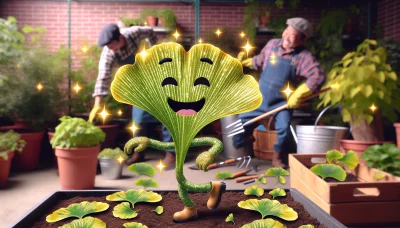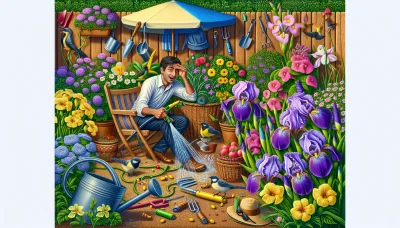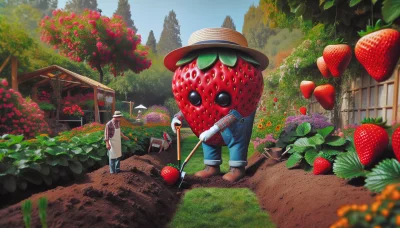Chlamydia flower Quiz
Test Your Knowledge
Question of
Understanding Chlamydia Flower: An Overview
The Chlamydia flower, often mistaken in name due to its similarity with a well-known bacterial infection, is a unique plant that holds its own significance in the botanical world. Its common name can lead to confusion, but it's essential to distinguish this plant from medical terminology. In the realm of gardening and botany, this flower is appreciated for its distinctive features and the aesthetic value it adds to gardens and landscapes. Botanically, it falls under a specific classification that highlights its unique characteristics among flora. Gardeners and plant enthusiasts value the Chlamydia flower for its beauty and the unique touch it brings to plant collections and garden designs. Its relevance in gardening is marked by its adaptability and the visual appeal it offers, making it a sought-after choice for those looking to enrich their green spaces with diverse plant species.
The Origin and Habitat of Chlamydia Flower
The Chlamydia flower, often confused due to its name with unrelated entities, is actually a plant species with a unique ecological niche. This flower originates from specific regions known for their rich biodiversity and unique climatic conditions. Primarily found in temperate zones, the Chlamydia flower thrives in environments that offer a balance of sunlight and moisture. Its natural habitat includes dense forests and areas near water bodies, where the soil is rich in organic matter and well-drained yet retains moisture. The environmental conditions favorable for the growth of the Chlamydia flower include mild temperatures, high humidity, and an ecosystem that supports a diverse range of flora and fauna, contributing to the complex interdependencies required for its survival and propagation.
How to Grow and Care for Chlamydia Flower
- Planting: Plant Chlamydia flowers in early spring after the last frost. Choose a spot with good drainage and space the seeds or seedlings about 8 inches apart to allow for growth and air circulation.
- Watering: Water the plants deeply once a week, allowing the soil to dry out slightly between waterings. Over-watering can lead to root rot, so ensure the soil is well-draining.
- Sunlight Requirements: These flowers thrive in full sun to partial shade. Aim for at least 6 hours of sunlight daily for optimal growth and flowering.
- Soil Type: Chlamydia flowers prefer well-drained soil rich in organic matter. Amend the soil with compost before planting to improve fertility and drainage.
- General Care Tips: Apply a balanced, slow-release fertilizer in the early spring to support healthy growth. Deadhead spent blooms regularly to encourage more flowers. Monitor for pests and diseases and treat accordingly to keep the plants healthy.
Common Pests and Diseases Affecting Chlamydia Flower
The Chlamydia flower, while not a common household name, can be susceptible to a range of pests and diseases that can hinder its growth and bloom. Key pests include aphids and spider mites, which are attracted to the flower's sap and can cause significant damage if not controlled. Diseases such as powdery mildew and root rot are also prevalent, often exacerbated by poor air circulation and overwatering, respectively. To prevent these issues, ensure good air circulation around the plants, avoid overhead watering, and treat infestations early with appropriate insecticides or fungicides. Regularly inspecting the plants for signs of distress can also help catch problems before they escalate, ensuring the health and beauty of the Chlamydia flowers.
The Significance of Chlamydia Flower in Landscaping
The Chlamydia flower, often overlooked in traditional garden design, offers a unique aesthetic and ecological value that can enhance any landscape. Its vibrant colors and unusual shape add a touch of elegance and intrigue, making it a focal point in any garden setting. Beyond its visual appeal, the Chlamydia flower plays a crucial role in promoting biodiversity. It attracts a variety of pollinators, from bees to butterflies, contributing to the health and sustainability of the garden ecosystem. Incorporating the Chlamydia flower into landscaping not only elevates the beauty of the space but also supports environmental conservation efforts.
Companion Plants for Chlamydia Flower
Note: It seems there might be a mix-up in the name. If you're referring to a specific flower, please check the name. For the purpose of this example, we'll suggest companion plants suitable for most common garden flowers requiring similar conditions.
- Lavender - Thrives in full sun and well-draining soil, complementing similar needs.
- Marigolds - Their bright blooms not only add color but also help deter pests, benefiting neighboring plants.
- Zinnias - Require similar sunlight and can improve the overall appearance of your garden setup.
- Rosemary - A herb that enjoys the same sunny conditions and can help repel certain pests.
- Coneflowers - These hardy flowers are easy to grow and can attract pollinators, benefiting the entire garden.
Frequently Asked Questions About Chlamydia Flower
| Question | Answer |
|---|---|
| What is the ideal soil type for Chlamydia flowers? | Chlamydia flowers thrive in well-draining, fertile soil with a neutral to slightly acidic pH. |
| How often should I water my Chlamydia flowers? | Water when the top inch of soil feels dry. Over-watering can lead to root rot. |
| Do Chlamydia flowers need full sun or shade? | They prefer full sun to partial shade. Around 6 to 8 hours of sunlight is ideal for optimal growth. |
| When is the best time to propagate Chlamydia flowers? | Early spring or late fall is the best time for propagation, either by seeds or division. |
| How do I deal with pests on Chlamydia flowers? | Use insecticidal soap or neem oil to treat common pests. Regularly inspect your plants for early signs of infestation. |
| Why are my Chlamydia flowers' leaves turning yellow? | Yellowing leaves can be a sign of over-watering, poor drainage, or a nutrient deficiency. Adjust watering habits and ensure the soil is nutrient-rich. |
| Can Chlamydia flowers survive frost? | No, they are not frost-tolerant. Provide protection or move them indoors if frost is expected. |
| How long do Chlamydia flowers bloom? | With proper care, they can bloom from late spring through early fall. |












